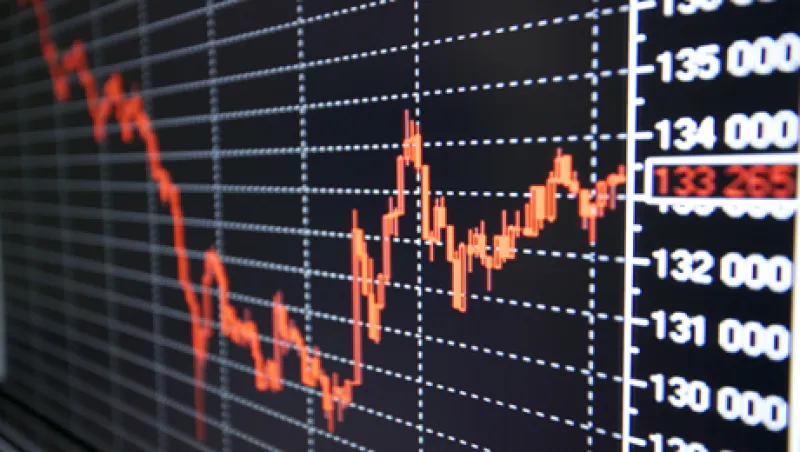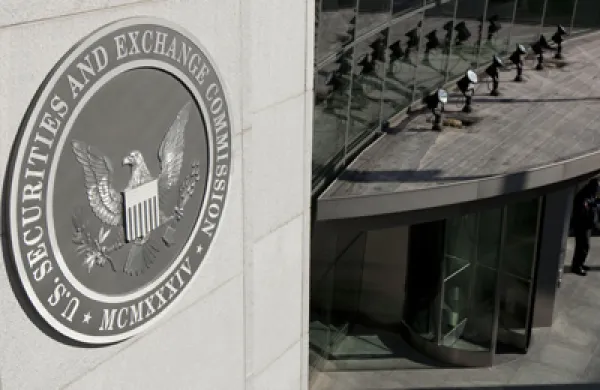Exchange-traded funds (ETFs) are the defining investment vehicle of the times, the perfect vehicle for expressing post-Lehman Brothers angst about the troubles of the world, from the debt crisis in Europe to the slowdown in China and the fiscal and economic challenges in the U.S.
In an era when sentiment about global events often takes precedence over the fundamental performance of individual companies, ETFs have soared in popularity because they allow hedge fund managers and other institutional investors to trade in and out of entire markets in an instant. Does the risk level in Europe appear to be on the rise today? You can use an ETF to instantly sell assets in emerging market equities—or all equities, for that matter. Do you want to seek a safe haven in gold? There’s an ETF for that, too. In fact, there are more than 1,000 of them, pegged to almost every index and market sector of significance, from equities to commodities, currencies, bonds and credit.
Unlike mutual funds, which can only be traded at the end of the day, ETFs can be traded on an exchange, all day long, just like stocks. Their fees are lower, too—typically one half to one percent of assets. And the variety of ETFs is seemingly endless. They are typically comprised of the underlying stocks or assets in an index, although sometimes they use derivatives and other synthetic means to replicate those assets. Some use leverage, some don’t. Some allow investors to go long, other ETFs allow investors to go short.
That flexibility, combined with their relatively low cost structures, has boosted their popularity in a big way. The number of unleveraged equity indexes in the U.S. climbed 22 percent to 1,090 last year, according to Bloomberg. Their assets rose 4 percent to $930 billion. The global ETF business, including ETFs based outside the U.S. and those using leverage to boost returns, has about $1.6 trillion under management. Astonishingly, the 19-year-old industry now accounts for a third of the value of all equity trades and a tenth of the number of actual trades.
That success has brought a lot of skeptical attention from regulators and policy makers in the U.S. and Europe, who question whether ETFs are merely expressing the record volatility of the last few years, in which asset prices have bounced up and down like a yo yo—or whether they are helping to cause it.
“ETFs ... are radically changing the markets,” says Harold Bradley, chief investment officer of the non-profit Ewing Marion Kauffman Foundation in Kansas City. He and Robert Litan, the foundation’s vice president of research and policy, recently warned in a white paper and in prepared Senate testimony that ETFs were increasing financial volatility and systemic risk. “ETFs that once were an important low-cost way for investors to assemble diversified stock holdings are now undermining the traditional price discovery role of exchanges, and in turn, discouraging new companies from wanting to be listed on U.S. exchanges,” Litan warned. What’s more, ETFs are reversing the natural financial order by setting the price of individual stocks, Litan and Bradley said.
ETF sponsors say there’s no evidence to support those claims, and note that the ETF market is still just one tenth the size of the mutual fund market—way too small to have such an outsized market impact.
Many academic researchers largely agree. “ETFs basically reflect the underlying market dynamics,” says Phillip Phan, dean of the Carey Business School at Johns Hopkins University. “Because they comprise portfolios of underlying securities, they do not actually move the market by virtue of their being traded, actively or otherwise. There is no empirical evidence that they have changed the technical dynamics of the market.”
Still, many investors who use ETFs on a regular basis insist that ETFs have done just that. “They really have a broad impact on the trading world. Every new product that comes to market, changes the market to some extent,” says Jim Ross, senior managing director of SPDR ETFs at State Street Global Advisors, the second largest ETF manager in the world, after Blackrock. The Standard & Poor’s Depositary Receipts, which track the S&P 500, was the first modern ETF—launched by the American Stock Exchange in 1993, and now the largest ETF in the world.
“ETFs ... are part and parcel of market changes and some point to them as contributors, (but not necessarily causes),” says Miranda Mizen, a consultant at financial research and advisory firm The Tabb Group. Over the summer, Mizen surveyed 68 head traders at buy-side institutions, and found that 71 percent of them do believe that ETFs and other index funds are having an impact on trading and liquidity patterns. She is careful to note that her research isn’t empirical evidence that ETFs are having an impact on the market. But the report does aggregate the detailed perceptions of market participants.
For one thing, she says, liquidity can be harder to find. How so? ETFs and other passive funds have put downward pressure on the size and number of trading blocks. Since these funds tend to include numerous underlying securities, they tend to purchase smaller blocks than buyers who aren’t using an ETF or other index structure. Instead of buying 50,000 shares of a single stock, an index fund might buy 5,000 shares of 10 stocks, according to Mizen. The result: “The other side of the trade is finding it harder to find liquidity, because everyone is looking,” Mizen says.
The broader issue, however, is whether ETFs have driven the prices of underlying securities, and whether they have led to greater correlation of assets, compounding a “risk on, risk off” mentality in which asset classes or bought and sold as a group, without much difference to their fundamental differences. Some investment managers who use ETFs and feel their impact on a day in, day out basis argue that it is a bit too easy to dismiss such concerns.
Lewis J. Altfest, CEO and chief investment officer at Altfest Personal Wealth Management, said there are numerous instances in which ETFs have driven the price of their underlying assets, instead of the other way around, citing oil’s spike to more than $140 a barrel several years ago. More recently, he says, ETFs have played a role in driving up the price of gold.
Since people who buy gold through ETFs are what he characterizes as “real holders of gold,” ETFs must open new contracts for gold to keep up with their investors. As a result, ETFs facilitated an increase in demand even while gold mining stocks, which he says better reflect the metal’s value, languished. “Would those people have bought gold through other means? There is some truth in that argument,” Altfest says. But he adds, “there is almost an inverse correlation between gold and gold mining stocks. The market is not efficient, in my opinion.”
Altfest, who has a PhD and an MBA, and is an associate professor of finance at Pace University, says the academy is missing the bigger picture. “Some academics don’t give enough weight to behavioral finance and the way that ETFs facilitate the ease of acquisition and momentum investing,” says Altfest.






